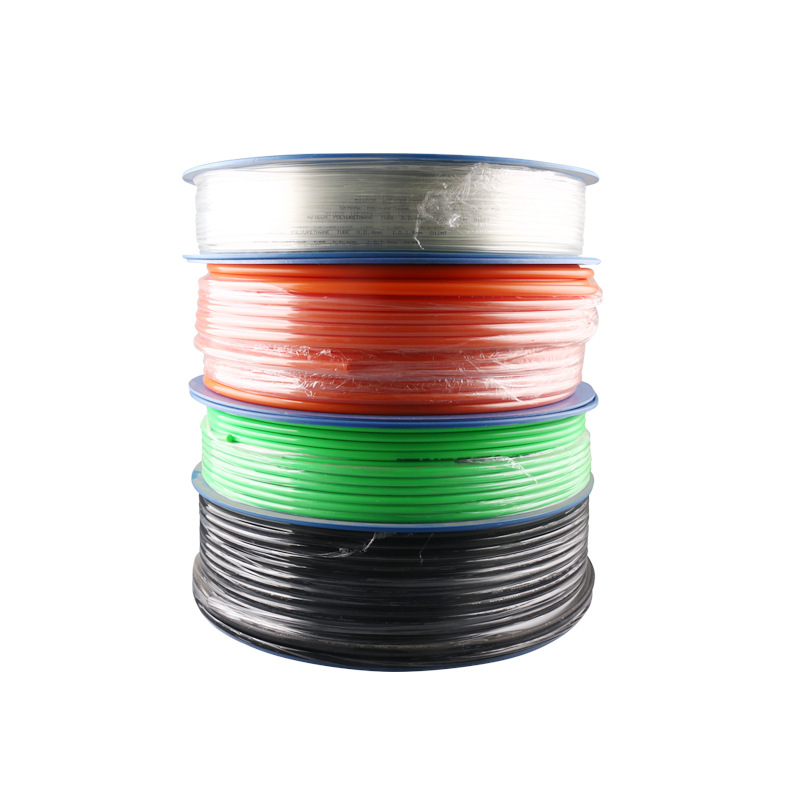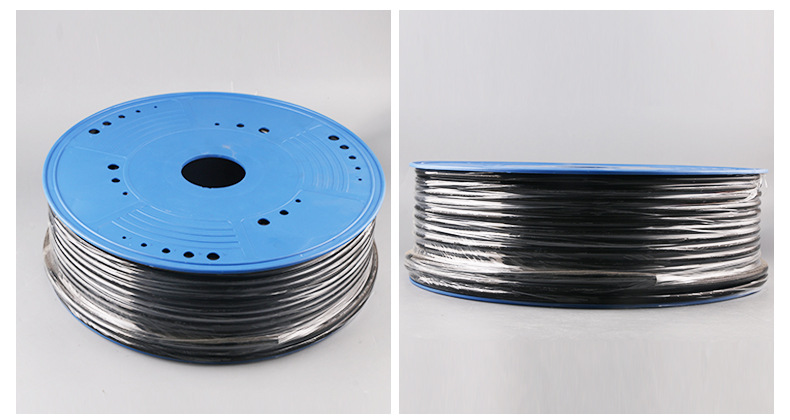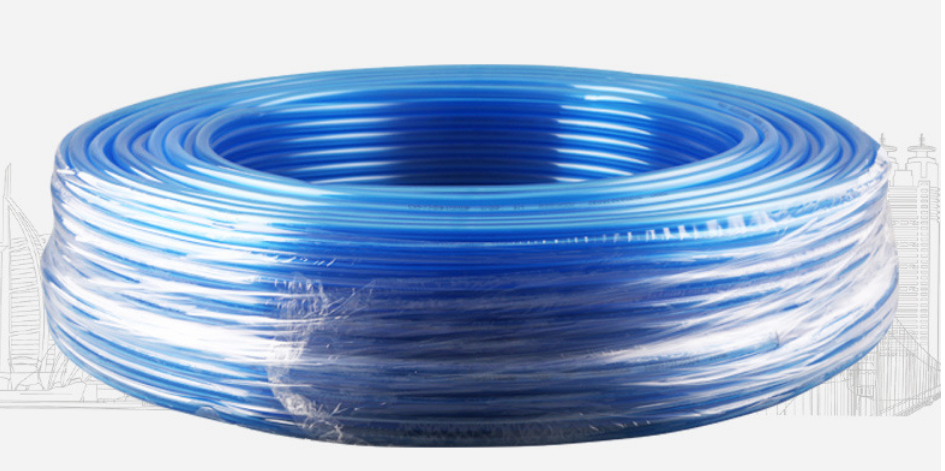Polyurethane tubing is a remarkable material that has become a staple in various industries due to its unique properties. Known for its flexibility, chemical resistance, and ability to withstand extreme temperatures, polyurethane tubing is essential in many applications. This blog aims to provide you with valuable insights into the uses of polyurethane tubing, helping you understand how it can solve your specific challenges and meet your needs. By the end of this article, you will have a comprehensive understanding of polyurethane tubing and its applications, allowing you to make informed decisions that enhance your operations.
Table of Contents
ToggleCharacteristics of Polyurethane Tubing

Flexibility
One of the standout features of polyurethane tubing is its exceptional flexibility. This allows it to bend and twist without kinking, making it ideal for applications where space is limited or where the tubing needs to navigate around obstacles. In my experience, this flexibility not only simplifies installation but also reduces the risk of damage during operation. For instance, in pneumatic systems, the ability to route tubing through tight spaces can significantly enhance the overall design and functionality of the system.
Durability
Durability is another key characteristic of polyurethane tubing. It is highly resistant to abrasion, which means it can withstand wear and tear in demanding environments. This durability extends the lifespan of the tubing, reducing the need for frequent replacements and minimizing downtime in your operations. I’ve seen firsthand how investing in high-quality polyurethane tubing can lead to substantial cost savings over time, especially in industries like manufacturing and automotive, where equipment reliability is paramount.
Temperature Resistance
Polyurethane tubing can operate effectively in a wide range of temperatures, from -40°F to 200°F (-40°C to 93°C). This makes it suitable for both high-temperature and low-temperature applications, ensuring reliable performance regardless of the environment. Understanding the temperature range of your application is crucial for selecting the right tubing. For example, in the food processing industry, where temperatures can fluctuate dramatically, using the right tubing can prevent costly failures and ensure compliance with health regulations.
Lightweight
The lightweight nature of polyurethane tubing makes it easy to handle and install. This characteristic not only reduces labor costs but also minimizes the overall weight of the systems in which it is used. In applications where weight is a critical factor, such as robotics and automation, polyurethane tubing is an excellent choice. I often recommend it to clients looking to optimize their systems for efficiency and performance.
| Characteristic | Description |
|---|---|
| Flexibility | Excellent bending and twisting capabilities |
| Durability | High resistance to abrasion and wear |
| Temperature Resistance | Effective in extreme temperatures |
| Lightweight | Easy to handle and install |
What are Applications of Polyurethane Tubing?

1. Pneumatic Systems
Polyurethane tubing is extensively used in pneumatic systems, serving as a conduit for compressed air. Its flexibility and durability ensure that it can handle the pressures involved without bursting or leaking. By using polyurethane tubing in your pneumatic applications, you can improve system efficiency and reduce the risk of failures. I’ve worked with many clients who have reported enhanced performance and reduced maintenance costs after switching to polyurethane tubing.
2. Automotive Industry
In the automotive sector, polyurethane tubing is used for fluid transfer in various applications, including fuel lines, brake systems, and air conditioning systems. Its resistance to chemicals and high temperatures makes it a reliable choice for automotive manufacturers. Choosing the right tubing can enhance the safety and performance of your automotive systems. I’ve seen how the right material can make a significant difference in the longevity and reliability of critical automotive components.
3. Medical Devices
Polyurethane tubing is a popular choice in medical devices due to its biocompatibility and ability to maintain sterility. It is commonly used in catheters, infusion systems, and other medical applications where fluid delivery is crucial. Ensuring that you use high-quality polyurethane tubing can significantly impact patient safety and device efficacy. In my experience, the right tubing can help healthcare providers deliver better care and improve patient outcomes.
4. Chemical Processing
In chemical processing, polyurethane tubing is used to transport corrosive chemicals and fluids. Its chemical resistance ensures that it can handle a wide range of substances without degrading, making it essential in processing plants. Selecting the right tubing for your chemical applications can prevent costly leaks and ensure operational safety. I’ve seen firsthand how the wrong material can lead to catastrophic failures, emphasizing the importance of choosing the right tubing.
5. Agriculture
Polyurethane tubing is commonly used in irrigation systems and fluid transfer applications in agriculture. Its flexibility allows for easy installation and adjustment, ensuring that crops receive the necessary resources for optimal growth. Utilizing polyurethane tubing in your agricultural applications can lead to improved irrigation efficiency and crop yields. I’ve worked with farmers who have reported significant improvements in their irrigation systems after switching to polyurethane tubing.
6. Food and Beverage Industry
In the food and beverage industry, polyurethane tubing is used for transporting liquids while meeting strict hygiene standards. Its non-toxic properties and ease of cleaning make it suitable for food processing applications. Ensuring compliance with health regulations is crucial, and using the right tubing can help maintain product quality. I’ve seen how the right tubing can help food manufacturers avoid costly recalls and maintain their reputation for quality.
7. Robotics and Automation
In robotics and automation, polyurethane tubing is utilized for pneumatic actuators and other components. Its lightweight and flexible nature enhances the performance of automated systems, allowing for precise movements and operations. Investing in high-quality tubing can significantly improve the responsiveness and efficiency of your robotic systems. I’ve observed that companies that prioritize quality in their components often see a direct correlation with productivity and output.
What are Advantages of Using Polyurethane Tubing?

Cost-Effectiveness
Polyurethane tubing is often more cost-effective than other materials due to its durability and longevity. By reducing the frequency of replacements, it can lead to significant savings over time. Investing in polyurethane tubing can provide a positive return on investment through reduced maintenance costs. I’ve advised many clients to consider the long-term benefits of high-quality tubing, and they have seen the value in their decision.
Versatility
The versatility of polyurethane tubing allows it to be used in a wide range of applications across various industries. This adaptability makes it a go-to choice for engineers and manufacturers. Using a single type of tubing for multiple applications simplifies inventory management and reduces costs. In my experience, this versatility is a game-changer for companies looking to streamline their operations.
Ease of Installation
The lightweight nature of polyurethane tubing simplifies installation processes, reducing labor costs and downtime. Its flexibility allows for quick adjustments and routing in complex systems. Projects using polyurethane tubing can often be completed faster, leading to quicker project turnarounds. I’ve seen how this efficiency can translate into significant time savings for companies, allowing them to focus on their core operations.
Considerations When Choosing Polyurethane Tubing
Pressure Ratings
When selecting polyurethane tubing, it is essential to consider the pressure ratings. Ensure that the tubing can handle the maximum pressure of your application to prevent failures. Consulting with manufacturers can help you understand the specific pressure requirements for your application. I always recommend conducting thorough testing to ensure that the tubing meets your needs.
Temperature Range
Consider the temperature range in which the tubing will operate. Choose a polyurethane tubing that can withstand the specific temperatures of your application to ensure reliability. Understanding the thermal environment is crucial for preventing premature tubing failure. I’ve seen many projects fail due to inadequate temperature ratings, so it’s essential to do your homework.
Chemical Compatibility
Ensure that the polyurethane tubing is compatible with the fluids it will transport. This compatibility is crucial to prevent degradation and ensure the longevity of the tubing. Conducting thorough testing and consulting with suppliers can help you avoid issues related to incompatible materials. In my experience, taking the time to verify compatibility can save you from costly mistakes down the line.
| Consideration | Description |
|---|---|
| Pressure Ratings | Ensure tubing can handle maximum application pressure |
| Temperature Range | Choose tubing suitable for specific temperature ranges |
| Chemical Compatibility | Verify compatibility with transported fluids |
Conclusion
Polyurethane tubing is an invaluable component in various industries, offering flexibility, durability, and resistance to chemicals and extreme temperatures. Whether you are in the automotive, medical, agricultural, or food and beverage industry, understanding the applications and advantages of polyurethane tubing can help you make informed decisions that enhance your operations.
By selecting the right polyurethane tubing for your specific needs, you can solve common challenges, improve efficiency, and ensure the reliability of your systems. If you have any questions or need assistance in choosing the right product, feel free to reach out for expert advice.

